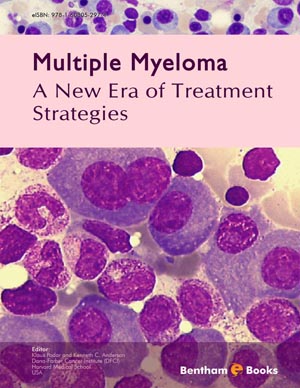Abstract
More than 80% of multiple myeloma (MM) patients present with bone involvement frequently develop serious complications that negatively affect both quality of life and overall survival. Bone disease in MM is a consequence of unbalanced remodeling resulting in the development of osteolytic lesions. Generalized osteoclast (OC) activation is the underlying mechanism coupled with osteoblast (OB) inhibition. The molecular events leading to this imbalance of the OC/OB axis is a result of the interaction of MM cells with bone cells within the bone marrow milieu and consequent cytokine deregulation. Here we will discuss the pathogenesis, clinical sequelae and therapeutic strategies for the treatment of MM bone disease. We will focus on novel therapeutic strategies under investigation to restore bone homeostasis. Such approaches are being studied not only with the goal of alleviating morbidity from bone disease but also for their resultant anti-MM activity.
Keywords: Osteoclasts (OCs), osteoblasts (OBs), receptor activator of NF-kB ligand (RANKL), osteoprotegerin (OPG), OC activating factors (OAFs), dickkopf (DKK) 1, bisphosphonates, denosumab, osteonecrosis of the jaw (ONJ), activin A, B-cell activating factor (BAFF)






















